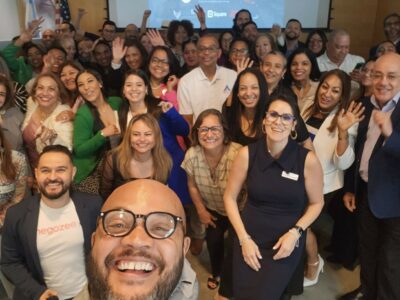Latin Idols teaching marketing at the MET Gala 2024

Hispanic celebrities gave lessons on how to connect with their audience, from Rosalía who doesn’t hide her accent while giving interviews, to Bad Bunny who mixes both languages in his statements, showing that the key to connecting with the public is authenticity, and their native language is a crucial ingredient.
Bilingual Hispanics embrace their accent and roots, so why don’t U.S. brands do the same by embracing their style and tone to connect?
Connecting with the Hispanic audience in the United States is essential for American brands looking to expand their market reach and foster a loyal customer base. The Hispanic population in the U.S. is not only one of the largest ethnic groups (60 million) but also one of the fastest-growing, making it a significant demographic for businesses to engage with effectively.
Here are some strategies for American brands to connect with the Hispanic audience:
- Understand Cultural Nuances: It’s crucial for brands to understand that the Hispanic community is diverse, with various cultural nuances based on nationality, language, and acculturation levels. Taking the time to research and appreciate these differences can help tailor marketing strategies that resonate with different segments of the Hispanic audience.
- Bilingual Marketing: While many Hispanics are bilingual, a significant portion prefer consuming content in Spanish. Offering marketing materials, advertisements, and customer support in Spanish can make a brand more accessible and relatable to Spanish-speaking Hispanics.
- Cultural Relevance: Incorporating elements of Hispanic culture, such as traditions, holidays, and values, into marketing campaigns can create a sense of connection and authenticity. Brands should be mindful of cultural sensitivities and avoid stereotypes, opting instead for genuine representation and inclusivity.
- Celebrity and Influencer Collaborations: Partnering with Hispanic celebrities and influencers who resonate with the community can help amplify a brand’s message and reach. These collaborations can enhance brand visibility and credibility among Hispanic consumers.
- Community Engagement: Actively engaging with Hispanic communities through events, sponsorships, and charitable initiatives demonstrates a brand’s commitment to the community beyond just selling products. Building genuine relationships and participating in cultural events can foster trust and loyalty among Hispanic consumers.
- Tailored Products and Services: Offering products and services that cater to the specific needs and preferences of Hispanic consumers can differentiate a brand in the market. This could include product formulations, packaging designs, or marketing promotions tailored to resonate with Hispanic cultural preferences.
- Digital and Social Media Presence: Leveraging digital and social media platforms popular among Hispanics, such as Instagram, Facebook, and TikTok, can help brands reach a broader audience and engage with them in meaningful ways. Creating culturally relevant content and fostering two-way communication can strengthen brand-consumer relationships.
- Authentic Storytelling: Sharing authentic stories that reflect the experiences, aspirations, and challenges of Hispanic individuals can humanize a brand and make it more relatable. Highlighting diverse perspectives and contributions within the Hispanic community can resonate with consumers on a deeper level.
By implementing these strategies and prioritizing cultural sensitivity and authenticity, American brands can effectively connect with the Hispanic audience, build lasting relationships, and drive business growth in an increasingly diverse market landscape.





Responses